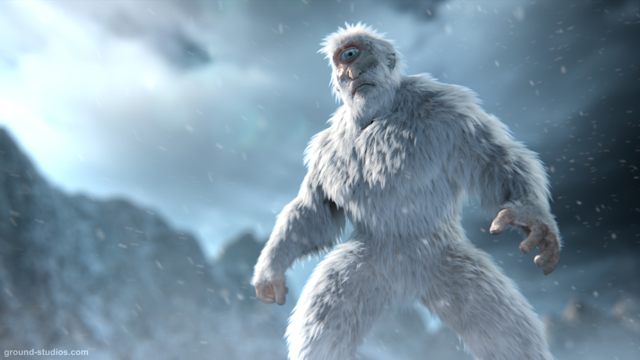PARIS — For those who believe in the Yeti, the news can only be described as, well, abominable.
Science has cast its methodical eye on samples of hair reputed to have been left by the Himalayan snowman of legend... and determined they came from a bear or a goat.
Similarly crushing disappointment lies in wait for those who believe in Big Foot, the Yeti's North American counterpart; in the almasty, the elusive man of the Central Asian wastes; and in the orang pendek, a bipedal hominid reputed to roam the mountainous forests of Sumatra.
The evidence, reported in the British journal Proceedings of the Royal Society B, comes from DNA testing of hair samples attributed to "anomalous primates", a neutral term for these creatures of legend.
The probe added the firepower of biotechnology to a debate that has been raging for decades.
"On the one hand, numerous reports including eye-witness and footprint evidence, point to the existence of large unidentified primates in many regions of the world," its authors said.
"On the other, no bodies or recent fossils of such creatures have ever been authenticated," they said. "Modern science has largely avoided this field."
Missing humans?
Theories for "sightings" of Yeti and co. have ranged from surviving Neanderthals and other minor branches of the human family tree, to a species of giant ape, Gigantopithecus.
The investigators, led by University of Oxford genetics professor Bryan Sykes, sent out a request in May 2012 to museums and individual collectors — including renowned mountaineer Reinhold Messner — with samples of hair that reputedly came from "anomalous primates".
They received 30 hair samples in good enough shape to allow gene sequencing.
Three were said to be from Yetis.
One of these was found to have come from a Southeast Asian goat called a serow (Capricornis sumatraensis).
The other two — one from Ladakh in India and the other from Bhutan — threw up an intriguing link in the DNA bank with... Ursus maritimus, or the polar bear.
The hairs likely came from a distant descendant of the polar bear or a local cross with a brown bear, the scientists suggested.
"If these bears are widely distributed in the Himalayas, they may well contribute to the biological foundation of the Yeti legend, especially if, as reported by the hunter who shot the Ladakh specimen, they behave more aggressively towards humans than known indigenous bear species."
Eight samples attributed to the almasty came variously from the brown bear (Ursus arctos), or from cows, horses and racoons.
A single sample thought to have came from an orang pendek was traced to a Malaysian tapir (Tapirus indicus).
The 18 "Big Foot" samples were found to have a wide range of real world sources, ranging from the American black bear, raccoon and cow to a porcupine and either a wolf, coyote or dog.
Perhaps the biggest disappointment was a "Big Foot" tuft in Texas which turned out to have come from a hairy human — a European, judging by the genetic match.
The authors throw down the gauntlet to the "cryptozoology community" — those who believe in the existence of fabulous, hidden creatures — to throw up more convincing evidence to back their assertions.
"The techniques described here put an end to decades of ambiguity about species identification of anomalous primate samples and set a rigorous standard against which to judge any future claims."
